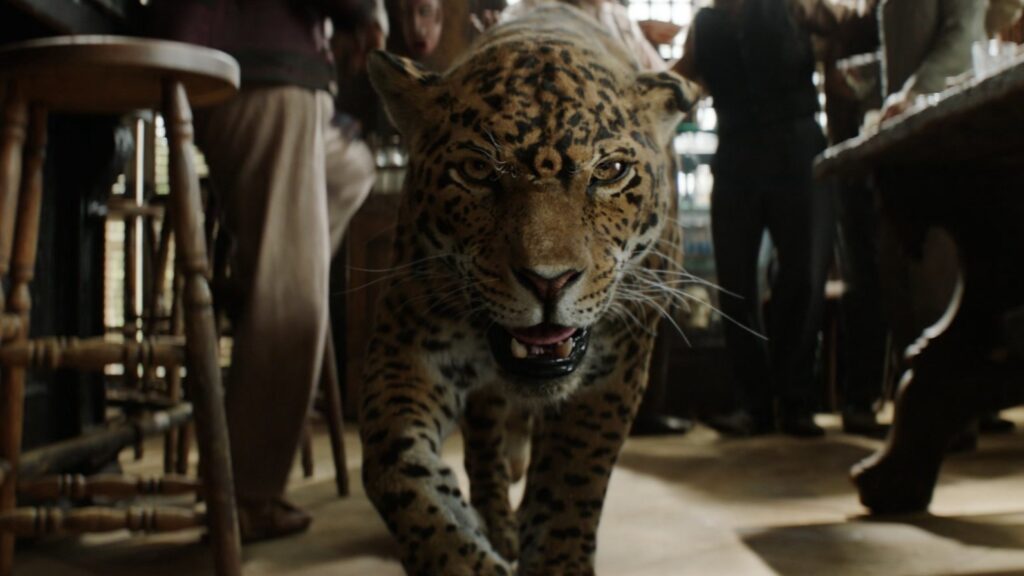
Walt Disney Studios’ Jungle Cruise, directed by Jaume Collet-Serra, is an absolutely magnificent big-screen action-adventure, starring Dwayne Johnson and Emily Blunt, as riverboat Captain Frank Wolff and Dr. Lily Houghton, who take a voyage together down the Amazon River in search of the Tears of the Moon, a form of fauna with incredibly curative aspects. (You can read Below the Line’s review of the film here.)
As might be expected, the lush jungle environments and Frank’s trusty pet jaguar, Proxima, were the characteristically impeccable work of Weta Digital, the New Zealand VFX house who has earned quite a reputation as well as more than a few VES and Oscars for their work on photorealistic creatures and places.
Weta’s VFX Supervisor for the show was Luke Millar, who previously had done a similar role for the Peter Jackson-produced Mortal Engines film a few years back, as well as working on the VFX team for both of Director Matt Reeves’ Planet of the Apes films, both of which received Oscar nominations for their visual effects.
Below the Line spoke with Mr. Millar over Zoom with him being in New Zealand. Besides talking about the craft behind creating so many beautiful environments and Frank’s pet panther, Proxima, we also got to ask him about his opinion of virtual production and whether that might have worked in the case of Jungle Cruise.

Below the Line: To start, I would love to know more about your background before coming to Weta. Were you doing VFX elsewhere before you came there?
Luke Millar: I guess my first job was back in 2001. I worked as a runner at the then Mill Film and The Mill. That’s where I cut my teeth and learned the software and also figured out exactly what I wanted to do within the visual effects industry. And then, after that, I finished my degree, came back and worked in television, doing commercials, music videos, and long-form TV, for about three years, which was great. It was already a good experience to give me a broad overview of all aspects. After that, I moved to DNEG 2005-ish, and it was pretty small back then, and I was there for a few years. And then I did a small stint at NBC before moving to Australia, and then did a bit of traveling, and then eventually we ended up in New Zealand after that. So you know, it’s been a few companies along the way and a few different roles along the way, but been at Weta now for the last 12 years.
BTL: And as it turns out, the best place to be through a pandemic as well, so congratulations. Who knew?
Millar: Absolutely. You tend to forget. That’s the thing. Life’s so normal, until you want to get on a plane and fly somewhere. That’s where it falls apart.
BTL: I know you worked on Mortal Engines, which was a couple years back, so did you start Jungle Cruise right after that, or did you work on some other things? I feel like Jungle Cruise has been in the pipeline for a while, no pun intended.
Millar: No, it has. There was some overlap. I was working on both of them, some finishing up Mortal Engines whilst Jungle Cruise was actually starting up, as well. They were actually working on both of those at the same time, and then we worked on it from that point all the way through til… I think we sort of finished around May last year. The movie was supposed to come out in June, July, and then obviously the pandemic happened, and they decided to hold on to it until people could go back to the theaters again.
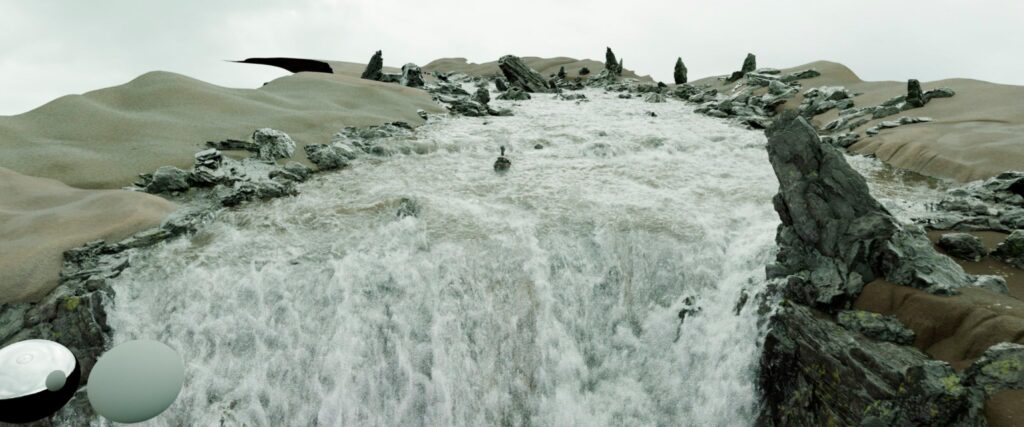
BTL: I feel like I spoke to Jaume for his movie, The Shallows, and I’m not sure how long ago that was [Editor: 2016, Ed.], but I think Jungle Cruise was already on the horizon, even though he may have done a few other movies in between. Where do you start on a movie like this with all the things you have to do?
Millar: I think the first thing they were very sure about or the first two big things was the character Proxima, and the rapids sequence. Those were the two sort of pieces, which they were very set on and knew that they wanted to be in the movie and exactly how they wanted them to play out. Those were probably the first two bits that we tackled, and then we sort of built out a lot of the jungle environments beyond that. The rapids kind of started that, and then a lot of the journeying between places, going down the river, and then into the tree village environment with the Matuna warriors, we did a bit of that. We didn’t do the conquistadors, but we did the environment stuff. And then eventually, because of all the water work we had done, it led quite nicely into doing the Waterfall Canyon, which is the start of the third act, and then the underwater environment with the lever pull, and the draining, right up until when the boy goes into the cabin with the tree. That was sort of the point in which we went up to and then after that, it was someone else.
BTL: I’ve had a few conversations with colleagues about the VFX in the movie, and I’m not sure how many of those people realize how much actual VFX there is. It seems like almost every shot must have some sort of VFX, or I imagine it’s close to that.
Millar: It’s a lot. It’s a hell of a lot. There are some pretty vast set builds, like the town was actually an on-set location build in Hawaii. So a lot of that stuff is actually playing in camera, which is really nice, and obviously, things were added like submarines, and some of the explosions and destruction, but a lot of that was actually there and constructed. The same with the bar and all the stuff that takes place within that environment, which is pretty cool. It’s nice that, even though there’s a lot of digital work, there’s also a lot of practical builds as well to key off.
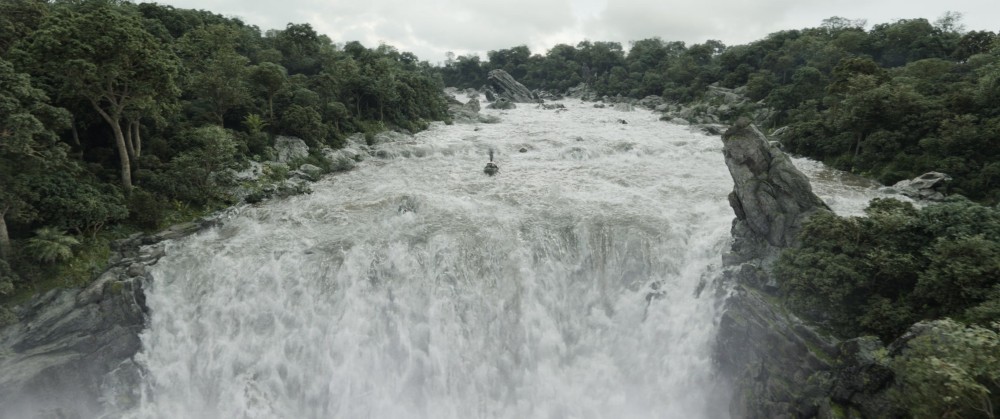
BTL: How did you work with Production Designer Jean-Vincent Puzos? I’m not sure what’s involved on his end, but does he do a lot of the designs for these places in hand before you get started?
Millar: They did a really good package of stuff to send to us. We got some really great artwork that referenced different locations, and also different things that they were looking for in some of the different locations, even down to the lighting design, as well. The jungle is really some foliage and some fauna and more fauna. There was definitely a very strong sort of design and how to distinguish between all those places, even though essentially it’s all made up of the same component. Even down to the time of day when things were set, and the vibe that they would have. Obviously, the lighting makes everything look slightly different in context. That was all very well mapped out, and the plan from day one really did become the plan for the whole movie. It didn’t really change. As productions develop, a lot of things change. They leaned into their plan, and it worked really well. It was nice that they had that commitment upfront, and it was great that it panned out that way as well.
Some of the work I’m most proud of is just is that environment work, because a lot of the time, it just feels like they’re there. We did do a plate-based shoot up the Amazon, so we had some amazing references to sort of match to, and a lot of the time, you just can’t tell. You forget that you’re watching visual effects shots, which is the ultimate goal, really.
BTL: Did you actually go on set to Hawaii while they were filming stuff there?
Millar: I would have loved to have gone to Hawaii, but unfortunately, that was when I was still finishing up my old show as well, so yeah, unfortunately, I had some other commitments. I did miss the plate shoot in the Amazon, which would have been amazing to go to as well. I was able to go out to the additional photography, which was great. It’s always super beneficial to see how they shoot things, why things have been a certain way, to sort of meet the team and talk about the work that we’re going to do, and what’s useful and what really helps us out what kind of stuff so that was a great experience.
BTL: This might be going too far behind the curtain, but does Weta have a jungle library as a starting point since you’ve done a number of Kong movies, and if you need trees, there must be something in the system? Do you have something you can start from or are you always starting from scratch on every show?
Millar: I guess there’s components, absolutely. There are certain things which are obviously created for a particular movie, which have to stay with that movie, but there are some things which are sort of agnostic to the movies, I guess, and things like a tree is a tree. And so, we do have a small asset library, which we can sort of start to pull some of the builds for, but it’s really the component pieces that come from that, the actual creation of the environment, the actual thing that you see, that is created for each show, based on their requirements, whether the river has to bend to the left or to the right or whether it’s to be a half a mile wide or 20 meters wide. All those kinds of things. Those are all sort of created bespoke for each environment and for each movie. Whilst we can harvest some of the details, like some of the plants, a lot of it has to be created from scratch, unfortunately. A lot of it as well, the technology moves quite quickly, so even –and sometimes, it drives me nuts — something that we built six months ago doesn’t work anymore. It’s amazing how quickly things move on, and the internal technology changes, so it’s not always possible to use, so you have to rebuild.
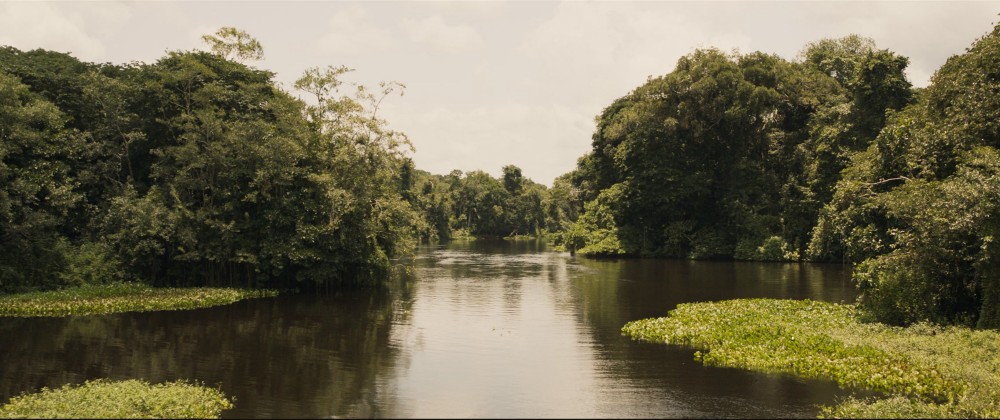
BTL: I know for the longest time, water was one of the toughest things to do using visual effects, although it seems now like you’ve gotten to a point where that’s no longer the case, like creating water is not as big a challenge anymore.
Millar: It depends on what, I guess. There’s different levels of water, let’s put it that way. Your boat, going down a very calm Amazonian river, that’s relatively straightforward. Where it gets spicier is where the water has to, essentially, break, splash, create spray, all of that kind of stuff. We’re doing sort of a lot of the river stuff, that was very easy to dial in. The opposite end of the spectrum is the rapids sequence where it’s full-on simulated interacting with rocks interacting with the boat, going into a waterfall, all of that is very complicated. The struggle there is really just the volume. One of the things, which we realized early on is that, in order to do this, it has to be one continuous simulation. Because if you pour water in at one end, and it shuts itself off at the end of the waterfall, you’ve got to then sort of replenish it. It’s just a constant moving cycle, and the amount of water was just insane. Like this was a huge river, and we sort of build it up in layers. We started off with simple simulations, and then fed those into more complicated simulations, which fed into more complicated simulations. And those simulations sat on top of each other so that as you get closer to the surface of the river, they get more and more detail basically.
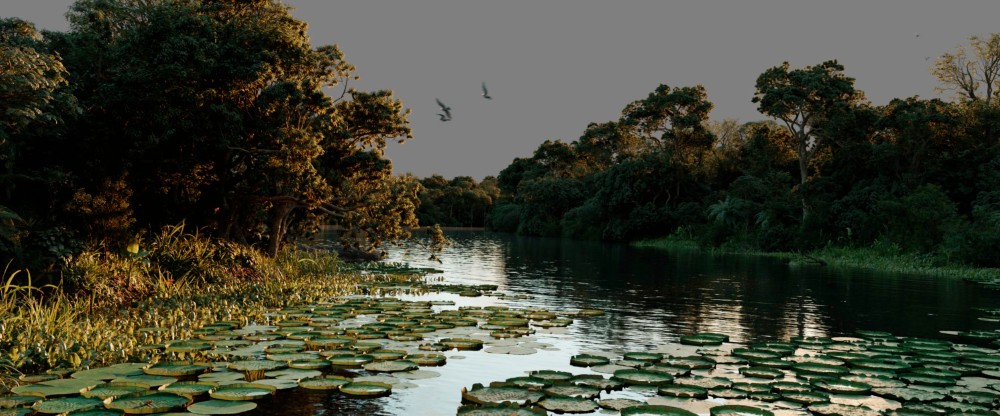
And then even that, still, to sort of make a change to the performance of the river, it was going to be a two-week turnaround, to recalculate. I mean, we’ve got some pretty punchy computers here, and even that really did push the limits of what we could do, which is nice. It’s nice to sort of get to a point where you’re like that was the most we could have got out of it with the power that we’ve got, that’s the most we could have done. We came up with some clever tech as well, for that one. Even though we could simulate it, we still needed more detail. If you’ve got a shot with the boat in it and around the boat itself, there are some areas where you need to speak into more fine, and then we can blend both patches back into the main river as well, so that we can have our base river, and then we can operate sections based on whatever the camera saw. One thing with water, and this has been apparent from the days when people used to make miniatures and use real water and shoot that, like your Lord of the Rings: The Two Towers, is it doesn’t scale very well. The miniature water never really worked when it’s exactly the same as a digital border. You need to get that detail into it. Otherwise, it doesn’t look big — it feels small. That was one of the main challenges with it, and even with technology as it is today, that’s always an ever-present challenge is trying to get more and more detail out of it.
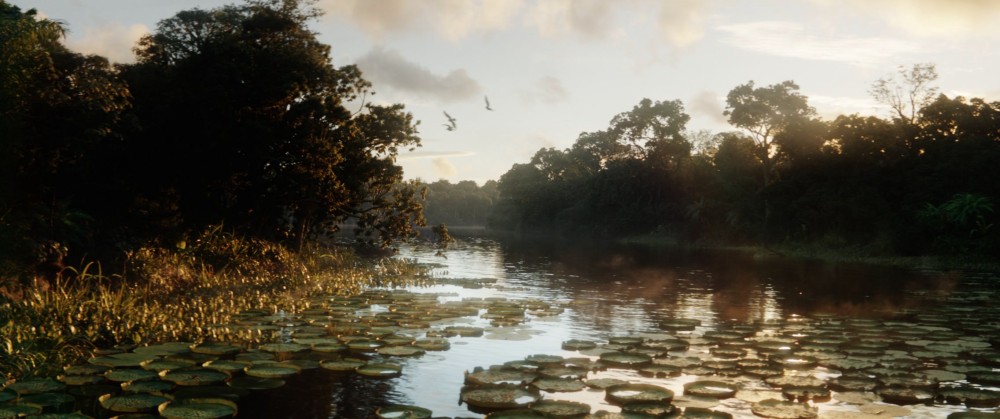
BTL: I assume you have water specialists at Weta, people who literally just show up for a show to work on the water aspects of a show? One of my colleagues spoke to the film’s underwater DoP Ian Seabrook, who specializes in that aspect of the shoot.
Millar: Yeah, that was one of the shoots I was present for with the underwater tank stuff. It was really amazing, because as soon as you’re underwater, there’s not a lot we can do in terms of affecting the shoot. It was really down to them just to get what they want. It’s not like you can put in tracking markers or photograph the lighting information. As soon as it’s underwater, all we can do is sit on the side and watch what’s going on. It was great to watch and be a part of it really, which is the mindset of how do you design how you want this to look, and we’ll just make it work. “Whatever you do, don’t let us constrain what you do, basically. Do what you need to do creatively and visually to get where you want. And we’ll just make it work and that’s that.”
Normally, there’s all these requirements for visual effects shots, which we couldn’t satisfy because of the nature of being underwater, but a lot of the time, we found that it didn’t really matter, because the nature of the shots are very sort of chaotic. We can add our piranha and bubbles and everything, and it all blended really nicely. I was pretty proud actually with how that stuff worked out. We did a really good accurate replication of the underwater environment and matched all the acoustics, the light everything really well, and so it made all that work quite seamless, to sort of split between the photography and the digital version without actually really seeing where the splits were.
BTL: Was the water tank shoot in Atlanta?.
Millar: It was on one of the stages there, and the other thing, which was really great, is they shot it originally on principal, but they did it with doubles with the intention of face replacement. If there’s one thing which is really hard is trying to do face replacement underwater, because even Dwayne and Emily didn’t really look much like Dwayne and Emily underwater. So when you’re trying to replace it with someone else, who is someone who doesn’t look like themselves underwater, it becomes a real hard sell. It really doesn’t look like them. Well, the plate version of them doesn’t, but they were very conscious of that, so when they reshot that whole sequence, all the shots of Dwayne and Emily, they are actually underwater. They did all of that work themselves, which was incredible, and it shows. You know it’s them, and it looks great.
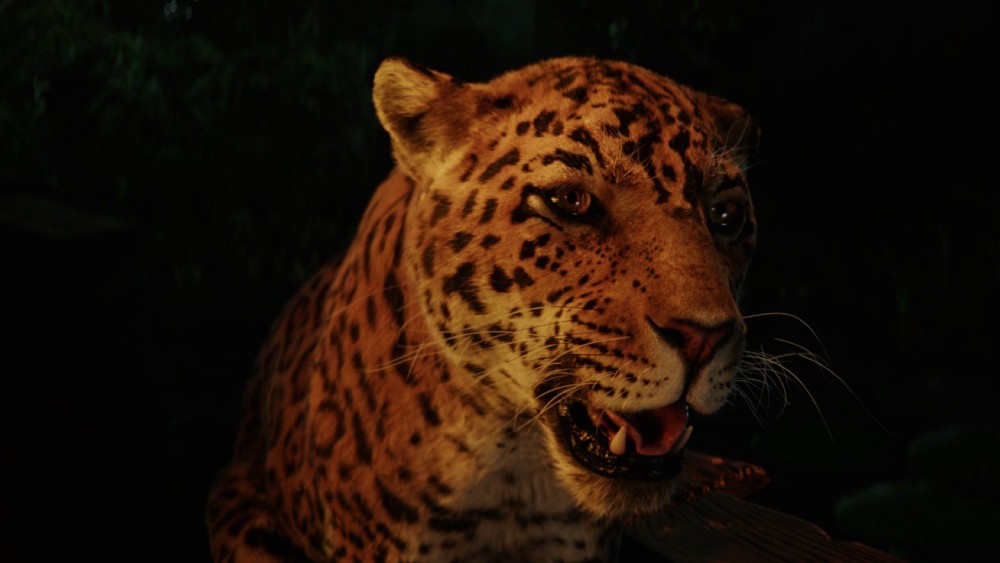
BTL: Let’s talk about Proxima, because I know Weta is one of the top houses in terms of making photorealistic animals, maybe you and ILM. IN Proxima’s case, he doesn’t talk which is unusual for Disney. Where do you start with Proxima, besides studying a similar giant cat?
Millar: The production already been through a process and kind of refined down what Proxima wanted to look like, at least. They didn’t want to just have any jaguar. They did some artwork. They built a maquette, sort of a stuffy head on set for lighting references, but also, everyone loved the character of that stuffy head, and so that became the thing which was supposed to be Proxima. That’s what we started with, but when we started sort of building her out from that, it became apparent very quickly, like the kid’s game Telephone, it started off as a photograph of a real jaguar, and through the paint-overs and 3D modeling, and then actual sculpting, it had changed very slight all the way along. When we got to the end product, and we took that and made a character out of it, it didn’t look like a jaguar. It looked too cartoony and too caricatured.
So we ended up going all the way back, tracking down the original image that they’d done their initial artwork paint-over on, and then finding out which cat in the world that was, knowing that most likely it was in captivity. I was searching through various zoo websites, tracking down to find the cat, and it was a jaguar in the San Diego Zoo, which was awesome. Armed with that information, we could then trawl the internet and find everyone’s zoo photographs of the same cat, and we started to recognize the markings and you know you’ve got the same one. They vary quite a lot from cat to cat, or us to just pick one and make sure that that was the focus of our build.
Once we sort of dialed in all the look of fur to make her look as real as possible, we then transplanted all the art director features, which the production wanted onto her, rather than doing it the other way around and building the maquette and then trying to make that look real. I mean, the details are subtle. There’s a marking on the middle of her forehead and there’s an ear which is sort of folded over. That was largely the build. Apart from that, she’s very physiologically correct, in terms of her muscle system, the way her skin slides with the weight, the way in which she moves. As part of the filmmaking, some of the motion, and the way she interacts with the actors, we have to sort of lean into performances from other animals as well. Like, her relationship with Dwayne lends itself to being a man’s best friend, and is a lot more doglike, in terms of her wanting him to throw the ball for her. Even sometimes the way she gets tickled under the chin or rubbed on the head, a lot of that leans itself into that. We had to look at other animals and sort of blend in bits of other creatures, in terms of the performance, to be able to communicate that kind of relationship that they had on screen. Other times, she’s got that sort of very house cat attitude, very dismissive and the humans are her servant kind of vibe, so some of that was sort of mixed in there as well. So it was a bit of a subtle blend of different ideas, but all of her motions like her walks, her runs, her leaps, that was all kind of referenced back to jaguar footage.
BTL: I’ve asked a few others at Weta about virtual production, which is something that has become more prominent in the last year. For a movie like this, it seems like it would be ideal, since you can have the jungle backgrounds on set for the director and cinematographer to use as part of the scene. I’m curious about your opinion in terms of virtual production and using LED screens on set.
Millar: I think for me, it really depends on the nature of what you want to do, as to the success of it. I know where those ideas were born from, and I think in that instance, it worked really. I think the tricky thing that you always struggle with is you need a certain commitment to what’s going to go beyond when you’re actually filming, and if you get that, and if everyone really leans into that from Day 1, then it can work really well.
In this instance, it probably would have worked quite well, because we knew that there would be jungle on either side of them, which was probably a good opportunity to be able to do a lot of that stuff using that technology. I think sometimes, if it’s a little more up in the air creatively as to what it could be, then sometimes it could not be quite so helpful. The other thing, which I think does by you, is in terms of the lighting on the actors, it definitely gets you away from that very studio-lit kind of look, especially if you’re lighting something outside. Having said that, one thing which they did do on the show, which was probably more work, but I think ultimately it gave them a much better result as a lot of the actors on the boat was all shot outside. It wasn’t on a stage, it was actually outside in ambient lighting conditions, natural sun, so I guess that’s like the real-world version of your virtual production almost, get all of that real-world lighting. It made a lot of the connections with the backgrounds just work so well, because they were already within that lighting environment. Obviously, that comes with a big overhead in terms of the shooting of it, and that’s why people don’t like doing that and prefer to go onto the stage. That is where virtual production can work really well, as you can get that sort of soft, ambient lighting quite easily without having to always compromise, based on what the weather’s doing, or with the sun constantly moving. You can always have perfect lighting continuity. From that standpoint, it works really well. So it’s a bit of a horses for courses — that’s my takeaway at this point. It depends on the nature of what you’re doing, but you’re absolutely right. I think this would have been a good use case for it.
Jungle Cruise is now playing in theaters nationwide, and is also available streaming on Disney+ with Premier Access for a $29.99 fee.
All photos courtesy 2021 Disney Enterprises, Inc., except where noted. (Click on images for larger versions.)





